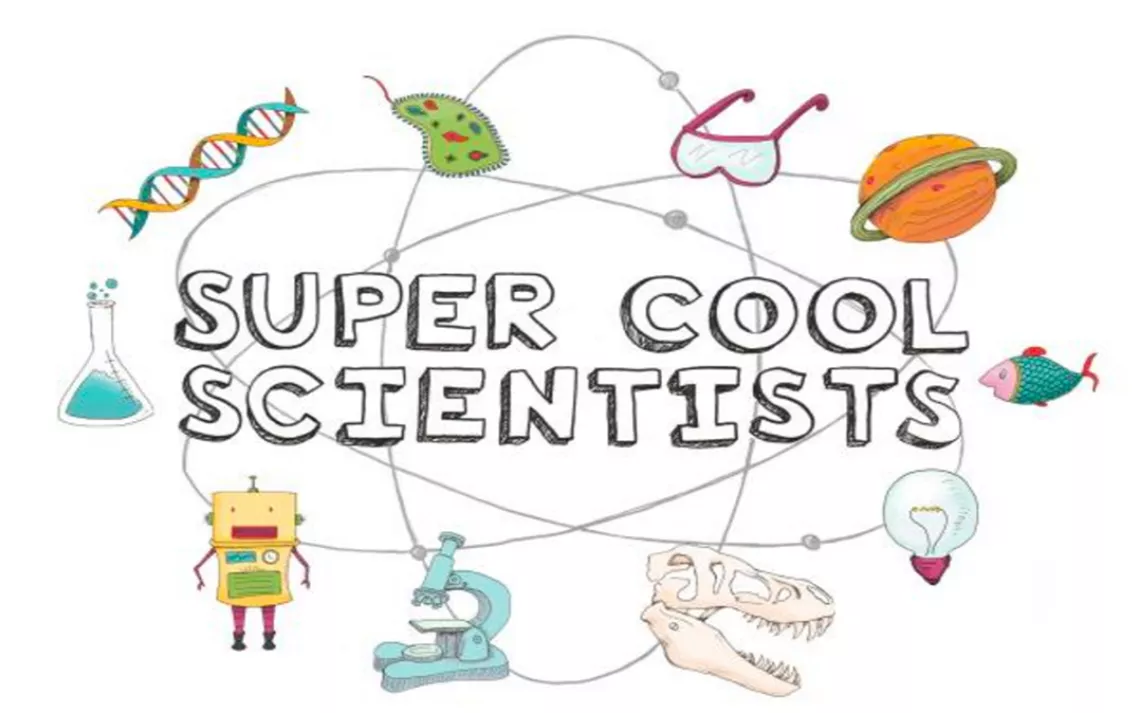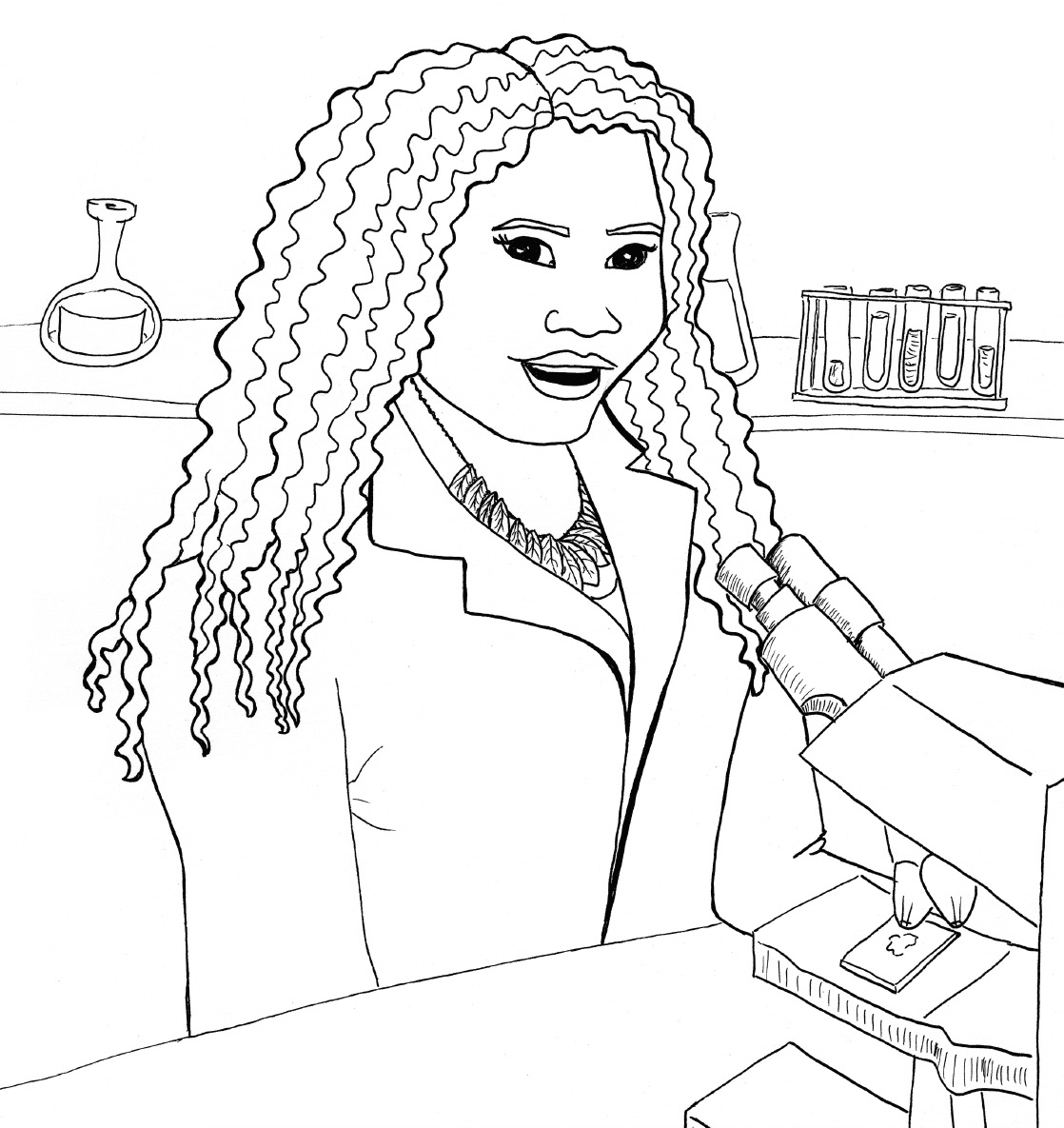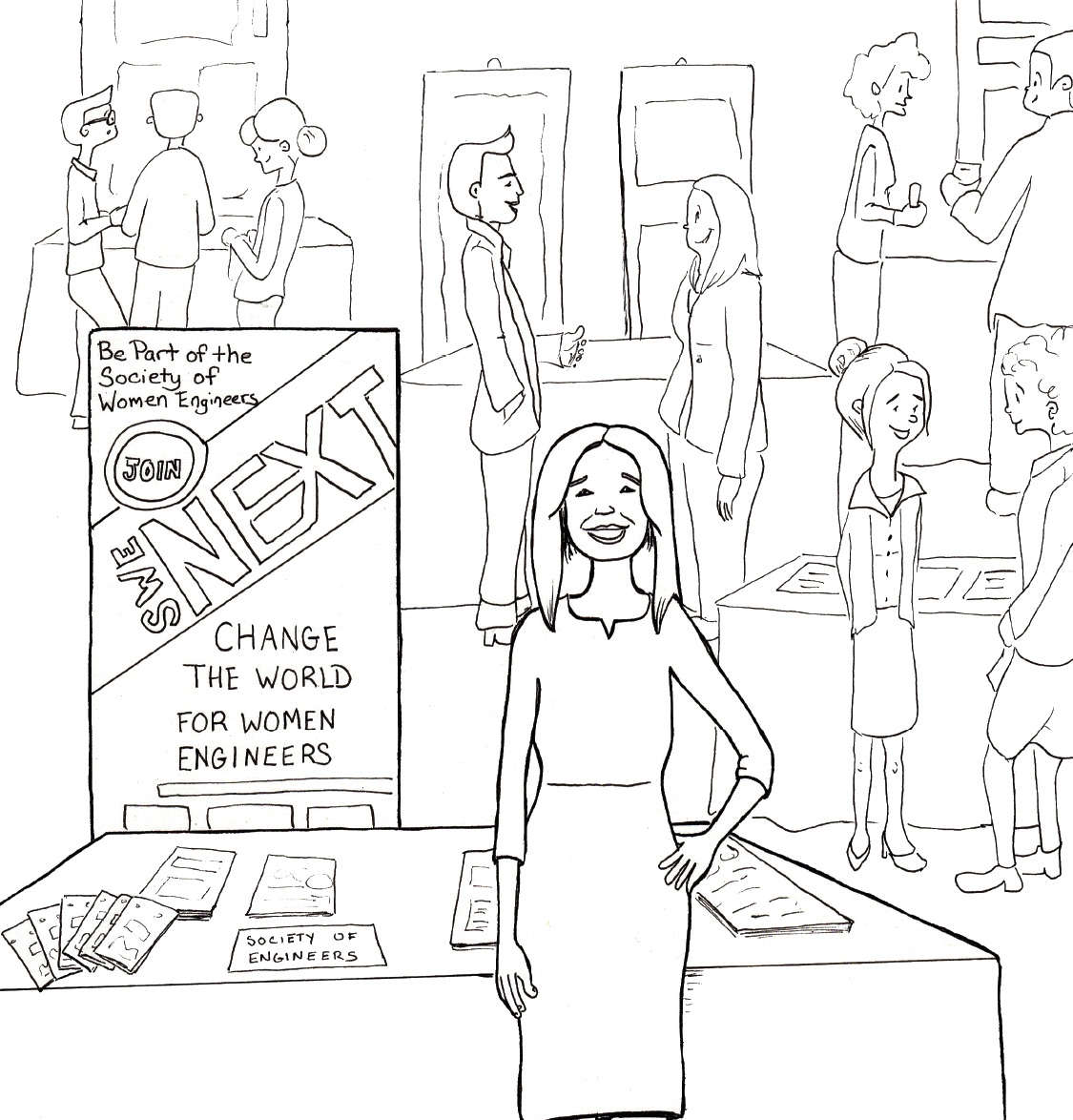Women Are Underrepresented in Science. Can a Coloring Book Help?
Sara MacSorley wants STEM fields to be more inclusive

Illustrations by Yvonne Page
Growing up, Lisette Titre loved to draw. The movie Toy Story introduced her to the world of computer animation, and now she develops new characters for video game companies.
Jessica Rannow is an industrial engineer, who, early in her career, designed more efficient distribution systems for big retailers.
Nancy Zhang is a graduate student in mathematics who works on ways to help physicians manage large quantities of data.
You’ve likely never heard of these women, but they are trailblazers in their fields—paving the way for more inclusion of women and minorities in science, technology, engineering, and mathematics (STEM).
Now each are being celebrated, along with 18 other women, in the new coloring book Super Cool Scientists, created by Sara MacSorley and illustrated by Yvonne Page. Like Titre and Rannow, many of the women featured do not fit the traditional “lab coat” image of a scientist. Some are entrepreneurs, some are pilots, and all are explorers and adventurers. Anne McClain and Jessica Meir are both astronauts. Patrice Banks is an auto mechanic with a background in engineering. And Liz Wayne is a physicist who co-hosts a podcast called PhDivas. MacSorley says she wanted to demonstrate just how varied STEM careers can be: “Science is all around us. There’s science in me going to the store to buy a blouse.”
MacSorley also wants to expose young people—and girls in particular—to female role models in STEM fields. “It’s a dynamic group of women—all different ages and backgrounds,” she says. For example, Karletta Chief is a member of the Navajo Nation. Karin Muraszko, one of the world’s top neurosurgeons, was born with spinal bifida. “Anyone can pick up the book and find someone they can relate to.”
 Liz Wayne, physicist. MacSorley’s first job out of college was as outreach coordinator for a National Science Foundation program in Rhode Island; her work as a science communicator made her aware of the underrepresentation of women and minorities in STEM fields. According to National Science Foundation studies, women make up only 29 percent of the science and engineering workforce. Their participation is not spread evenly across fields—for example, they make up about 11 percent of physicists and barely 8 percent of mechanical engineers. Minority women are even less represented overall, making up fewer than one in 10 employed scientists and engineers.
Liz Wayne, physicist. MacSorley’s first job out of college was as outreach coordinator for a National Science Foundation program in Rhode Island; her work as a science communicator made her aware of the underrepresentation of women and minorities in STEM fields. According to National Science Foundation studies, women make up only 29 percent of the science and engineering workforce. Their participation is not spread evenly across fields—for example, they make up about 11 percent of physicists and barely 8 percent of mechanical engineers. Minority women are even less represented overall, making up fewer than one in 10 employed scientists and engineers.
So why address this issue with a coloring book? For MacSorley, who now works in arts education, the project has been a return to her first love of science communication. Also, a few years ago she started suffering anxiety attacks, which led her to discover the therapeutic value of coloring. The idea crystallized when she searched online for just such a coloring book and nothing came up.
At the time, she was already acquainted with Page and liked her artistic style. “I knew I didn’t want something too caricaturish,” she says. She sought her out for the project, and the two started a Kickstarter campaign to raise funds. MacSorley wrote the biographies while Page drew the illustrations.
 Jessica Rannow, industrial engineer. Amazon began selling the coloring book in January. MacSorley says that while it’s geared for middle school students, she’s received feedback from users that younger kids enjoy the book, too. It’s also turned out to be popular with graduate school students.
Jessica Rannow, industrial engineer. Amazon began selling the coloring book in January. MacSorley says that while it’s geared for middle school students, she’s received feedback from users that younger kids enjoy the book, too. It’s also turned out to be popular with graduate school students.
Each of the 22 biographies is unique, but common themes run though them: the importance of having mentors, and how being different from others can present challenges but is also a source of strength. MacSorley hopes that Super Cool Scientists not only inspires young people, but also brings more recognition to the women already in STEM fields who are breaking important new ground. “Ultimately, the goal is not just diversity but full inclusion,” MacSorley says. “Everyone should be able to bring their best to the table.”
Check out #supercoolscientists on Twitter to see examples of colored pages and to submit your own.
 The Magazine of The Sierra Club
The Magazine of The Sierra Club



